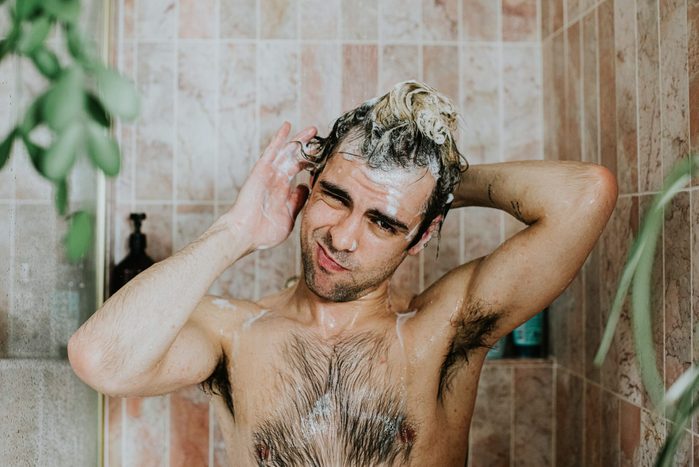
Be honest with yourself: At bath or shower time, maybe it’s tempting to tend to the parts that get the smelliest, or sometimes to skip a rinse completely if you’re spending the bulk of your days by yourself. But smelling sweet isn’t all about making a good impression on others. A doctor specializing in hygiene advises that a few signs can actually serve as warnings that you’re not cleansing yourself properly.
The Healthy @Reader’s Digest asked Dr. Rosmy Barrios, MD, a medical doctor and master esthetician, to share a few of the warning signs that someone has bad hygiene. “These symptoms can result from a lack of regular bathing or showering, which can lead to the buildup of bacteria and dirt,” Dr. Barrios says.

Body odor
According to the Cleveland Clinic, body odor occurs when bacteria on your skin come in contact with sweat. Because their body is already naturally covered with bacteria, when the water, salt, and fat from your sweat mix with it, it can cause an odor. The particular smell of the odor—whether good or bad—usually depends on what you ate, your hormones, your medications, and more.
Cleansing your body regularly with an antibacterial soap in a shower or bath is the best way to prevent that pungent aroma on your person. If you find particular areas that sweat or smell more than others (like armpits), take extra care to clean those spots well.
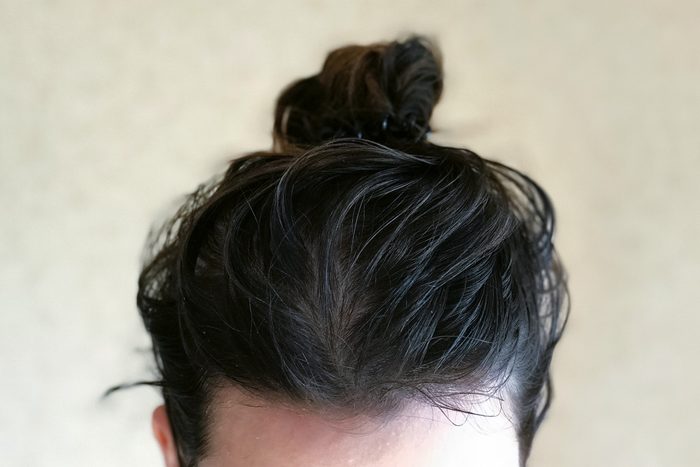
Greasy hair
Experiencing an oily scalp? That’s because your scalp produces sebum, a natural oil that has antimicrobial properties.
However, when it’s not washed properly, the scalp can look greasy from the excess oil, which means it’s time to wash your hair. If your scalp is greasy often, experts recommend using a mild shampoo without harsh chemicals, which can remove the natural oils in your scalp. However, if your hair is not greasy, you can likely go for a longer period of time before washing the hair again and letting the natural oils do their work. The frequency of how often you wash your hair would be dependent on how greasy it gets.
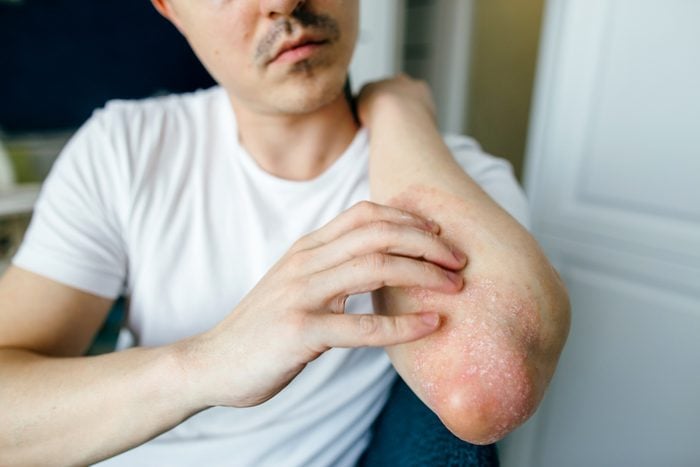
Skin infections
Regularly cleansing your skin helps to eliminate germs, oils, and dead skin cells—but without it, your skin can show irritation or even allergy-like responses. This irritation, and even potential infections, can occur when the skin has a build-up of dead skin cells, germs, dirt, and sweat.
Common skin infections that can occur because of poor hygiene include Staphylococcus (staph) and Streptococcus (strep). These bacteria can lead to cellulitis and infections such as eczema, psoriasis, and fungal infections, like athlete’s foot.
Another severe reaction due to poor hygiene is dermatitis neglecta, which causes your skin to look darker, scaly, and rough.
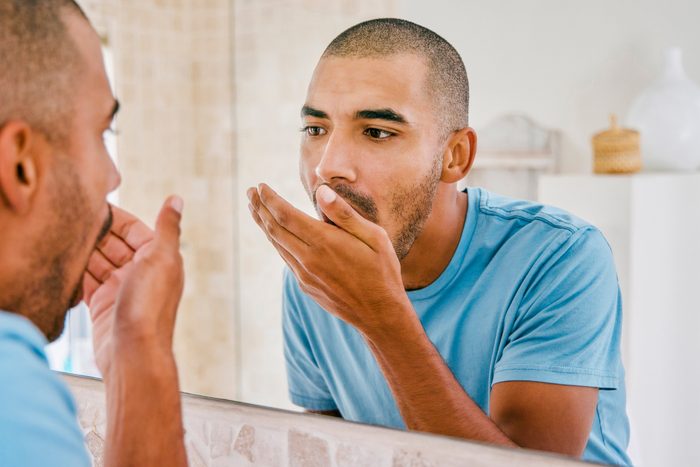
Bad breath
If someone has bad breath—not only following something potent they ate—it’s very possible that they have poor oral hygiene. Bad breath is formally known as halitosis, a medical condition that the Cleveland Clinic says can affect one out of four people around the globe.
Brushing, flossing, and routine dental cleanings are the key three steps to ensure you have good dental hygiene and protection against not-so-heavenly breath. This is due to the harmful bacteria that remain in your mouth if you’re not cleaning your teeth properly, which can lead to even more severe medical conditions like cavities and even gum disease. (One of our editors is a longtime fan of TheraBreath mouthwash, which can be a game-changer! A WaterPik is also a great tool to clear bacteria and debris from the mouth and keep gums extra healthy and the mouth fresh.)
Note that halitosis can be a symptom of other serious medical conditions, like gastroesophageal reflux disease (GERD), tonsil stones, and even head and neck cancers. If you are routinely cleaning your teeth but still find it hard to kick the bad breath, talk to your doctor about getting checked for other conditions.
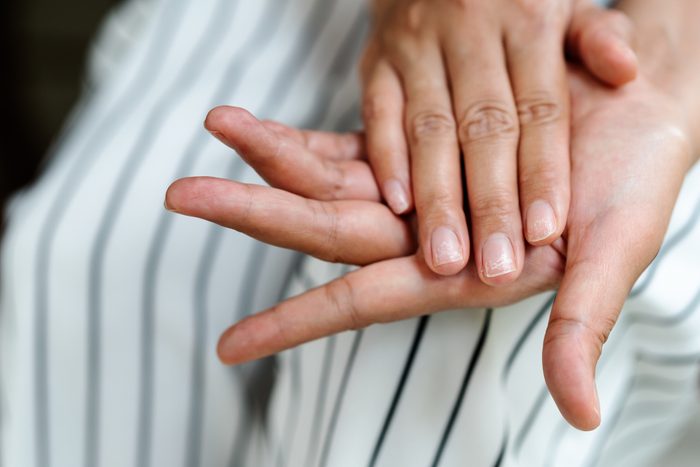
Dirty and broken fingernails
Constantly dealing with broken nails? Find that your nails seem to always have a thin line of dirt underneath them? This may be due to not routinely cleaning your nails, which should be a regular part of your hygienic routine.
The Centers for Disease Control and Prevention (CDC) suggests nails should be vigilantly cleaned and trimmed often to keep them healthy and prevent the spread of diseases like pinworm and E. coli. If your nails are not taken care of and cleaned, bacteria can remain around and underneath your fingernails. This can spread infections. (In fact, national and state health department regulations typically don’t permit frontline healthcare professions and restaurant servers to have long or acrylic nails.)
Regularly trimming your fingernails, then cleaning them with soap, water, and a clean nailbrush, are key.
